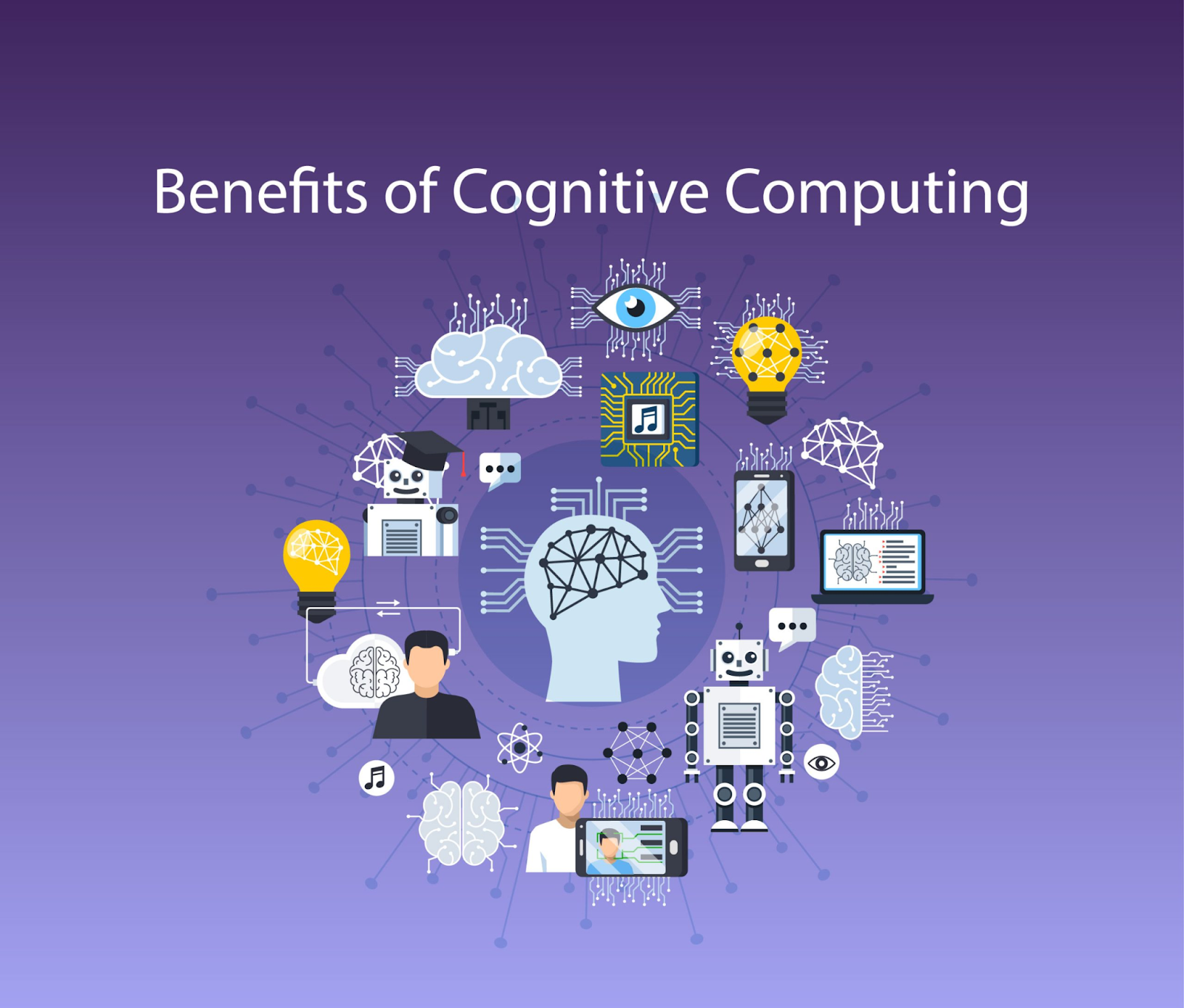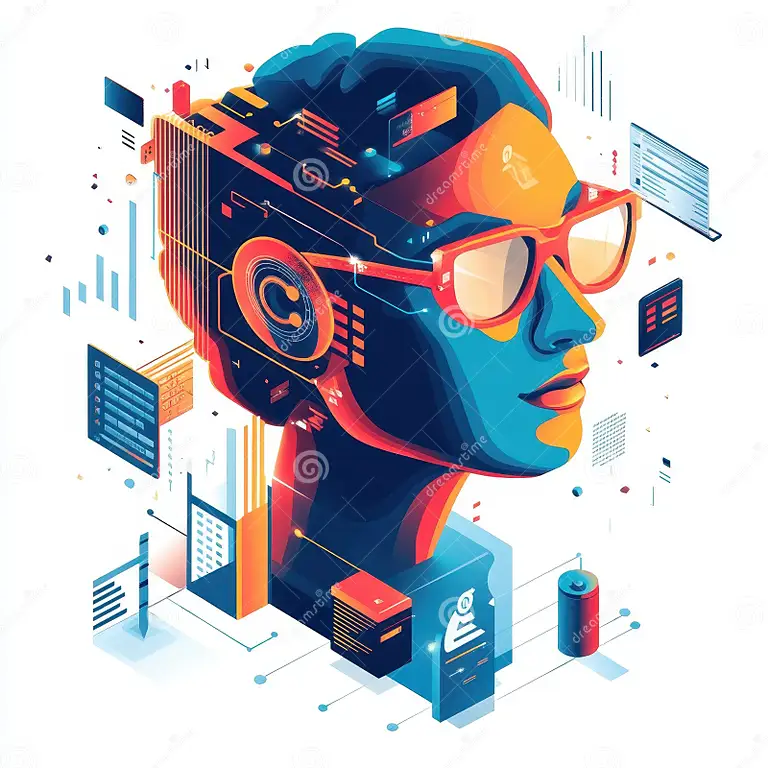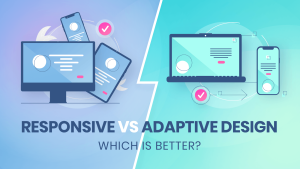Explore how Cognitive Computing Solutions empower enterprises with intelligent decision-making, real-time insights, automation, and human-like reasoning. Learn key technologies, industry applications, trends, and implementation best practices for next-generation digital transformation.

Cognitive Computing Solutions: Redefining Intelligent Enterprise Decision-Making
Cognitive Computing Solutions are rapidly transforming enterprise operations by bridging the gap between human intelligence and machine-driven automation. In today’s digital-first economy, organizations must process massive volumes of structured and unstructured data while making precise, real-time decisions. Traditional computing approaches often struggle in such dynamic conditions—opening the door for advanced cognitive systems that think, learn, and reason like humans.
These solutions integrate AI, ML, NLP, and advanced analytics to deliver intelligent systems capable of understanding context, interpreting meaning, and making informed decisions autonomously. As enterprises move toward intelligent automation, cognitive computing becomes a critical pillar of competitive advantage.
-
Introduction
-
What Are Cognitive Computing Solutions?
-
Core Technologies Behind Cognitive Computing
-
Applications Across Industries
-
Enhancing Enterprise Decision-Making
-
Improving Customer Experience
-
Driving Innovation
-
Emerging Trends
-
Implementation Considerations
-
Conclusion
- In today’s rapidly evolving digital landscape, businesses face the dual challenge of managing vast amounts of data while making precise, timely decisions. Traditional computing approaches, while powerful, often fall short when handling unstructured data, interpreting human-like reasoning, or providing predictive insights at scale. This is where cognitive computing solutions emerge as a transformative force, bridging the gap between human intelligence and machine processing capabilities.
Cognitive computing integrates artificial intelligence (AI), machine learning (ML), natural language processing (NLP), and advanced data analytics to create systems that simulate human thought processes. Unlike conventional automation, cognitive computing enables systems to learn, reason, and interact naturally with humans, unlocking unprecedented levels of operational efficiency and strategic insight.
What Is Cognitive Computing?

Cognitive computing refers to a class of technologies designed to mimic human brain functionality, enabling machines to understand context, infer meaning, and make informed decisions. Unlike rule-based AI systems, cognitive computing adapts through continuous learning and feedback, allowing organizations to manage complexity in dynamic environments.
Key characteristics of cognitive computing include:
- Self-learning systems: The ability to improve performance over time by analyzing outcomes and adjusting algorithms.
- Contextual understanding: Understanding not just data, but context, intent, and sentiment.
- Natural interaction: Utilizing NLP to comprehend and generate human language for seamless interaction.
- Adaptive reasoning: Making decisions based on incomplete, ambiguous, or unstructured data.
By simulating aspects of human cognition, these systems empower organizations to make faster, more accurate decisions while unlocking new avenues for innovation.
Core Technologies Powering Cognitive Computing
Cognitive computing solutions leverage a synergy of advanced technologies:
Artificial Intelligence (AI)
AI forms the backbone of cognitive computing, enabling machines to interpret complex datasets, recognize patterns, and predict outcomes. AI models, including deep learning networks, allow cognitive systems to handle unstructured data such as text, images, and videos—an essential requirement in sectors like healthcare and finance.
Example: In oncology, AI-powered cognitive systems can analyze thousands of medical research papers and patient records to recommend personalized cancer treatment plans.
Machine Learning (ML)
ML enables systems to learn from data without explicit programming. Cognitive computing platforms use ML to identify trends, detect anomalies, and optimize workflows autonomously.
Case Study: In financial services, ML-driven cognitive systems detect fraudulent transactions in real time, adapting to new fraud patterns without manual intervention.
Natural Language Processing (NLP)
NLP allows machines to understand, interpret, and respond to human language. This capability is pivotal for customer-facing applications, including chatbots, virtual assistants, and sentiment analysis.
Example: Retailers employ NLP-based cognitive systems to monitor social media sentiment, extracting actionable insights that influence product launches and marketing strategies.
Data Analytics
Cognitive computing relies on advanced analytics to process both structured and unstructured data from multiple sources. Through predictive and prescriptive analytics, organizations gain actionable insights to improve performance, anticipate trends, and mitigate risks.
Example: Manufacturing firms leverage data analytics to predict equipment failures, schedule maintenance proactively, and minimize downtime.
Transformative Applications Across Industries
Cognitive computing is revolutionizing operations across multiple sectors, enhancing decision-making, efficiency, and customer experience.
Healthcare
Healthcare is among the most promising beneficiaries of cognitive computing. By integrating medical literature, patient records, and real-time diagnostic data, cognitive systems assist clinicians in delivering personalized, evidence-based care.
Use Cases:
- Clinical decision support: Cognitive systems provide diagnostic suggestions based on historical data, genetic profiles, and research studies.
- Medical imaging analysis: AI-powered image recognition detects anomalies in X-rays, MRIs, and CT scans with higher accuracy.
- Patient engagement: Virtual assistants offer 24/7 support, answering queries and guiding patients through treatment plans.
Real-World Example: IBM Watson Health has collaborated with major hospitals to assist oncologists in recommending personalized cancer therapies, improving treatment outcomes.
Finance
In the financial sector, cognitive computing enhances risk management, fraud detection, and customer personalization. By analyzing transactional data, market trends, and regulatory changes, cognitive systems help institutions make data-driven decisions at unprecedented speed.
Applications:
- Fraud detection and prevention using anomaly detection algorithms.
- Personalized investment recommendations through predictive analytics.
- Regulatory compliance through real-time monitoring and automated reporting.
Case Study: JPMorgan Chase employs cognitive computing to automate contract review processes, reducing legal research time from weeks to hours.
Retail
Retailers harness cognitive computing to enhance customer experiences, optimize supply chains, and predict consumer behavior. By analyzing purchasing patterns, sentiment data, and social media trends, cognitive systems enable hyper-personalized marketing.
Use Cases:
- Chatbots and virtual assistants providing real-time customer support.
- Dynamic pricing based on market demand and competitor activity.
- Inventory optimization using predictive analytics to reduce stockouts and overstocking.
Example: Amazon leverages cognitive computing to recommend products, forecast demand, and streamline warehouse operations, creating a seamless customer experience.
Manufacturing
-
 Manufacturing companies utilize cognitive computing to boost operational efficiency, reduce downtime, and enhance product quality. Intelligent systems analyze machine data, supply chain metrics, and production workflows to make real-time adjustments.
Manufacturing companies utilize cognitive computing to boost operational efficiency, reduce downtime, and enhance product quality. Intelligent systems analyze machine data, supply chain metrics, and production workflows to make real-time adjustments.Applications:
- Predictive maintenance for machinery.
- Quality control using AI-driven visual inspection.
- Supply chain optimization through demand forecasting.
Case Study: General Electric uses cognitive computing to analyze sensor data from industrial machines, preventing equipment failures and improving operational efficiency.
Enhancing Decision-Making and Automation
Cognitive computing transforms traditional decision-making by providing:
- Real-time insights: Decision-makers receive contextual, actionable information instantly.
- Automation of complex tasks: Routine or highly complex processes can be automated without human intervention.
- Scenario simulation: Predictive modeling allows organizations to simulate multiple business outcomes and optimize strategies.
Example: In insurance, cognitive systems analyze claims data to detect potential fraud and recommend payout strategies, reducing human error and processing time.
Improving Customer Experience
Cognitive computing allows organizations to interact with customers in a human-like, personalized manner. By understanding preferences, sentiment, and context, these systems can proactively address customer needs.
Use Cases:
- AI-driven customer support agents capable of handling complex inquiries.
- Personalized product recommendations based on past behavior and predictive analytics.
- Sentiment analysis for proactive service improvement.
Example: Banks deploy cognitive chatbots to assist customers with account management, loan applications, and fraud alerts, delivering round-the-clock support.
Driving Business Innovation
By enabling data-driven decision-making and intelligent automation, cognitive computing stimulates innovation across products, services, and operational processes. Companies can explore new business models, reduce time-to-market, and respond faster to market shifts.
Example: Healthcare startups use cognitive computing to develop predictive analytics platforms that forecast disease outbreaks, creating innovative preventive care solutions.
Emerging Trends in Cognitive Computing
The field of cognitive computing is evolving rapidly, with several cutting-edge trends shaping its future:
Explainable AI (XAI)
As AI models become more complex, understanding why a system made a specific decision is crucial for trust and compliance. Explainable AI ensures transparency, helping organizations justify decisions in regulated industries like finance and healthcare.
Real-Time Insights
Cognitive computing increasingly leverages streaming data to provide immediate insights. This capability is critical for sectors like manufacturing, logistics, and financial trading, where split-second decisions have significant impact.
Hybrid Human-Machine Collaboration
Cognitive computing augments human intelligence rather than replacing it. Hybrid approaches combine human judgment with machine precision, enabling better decision-making and problem-solving.
Example: In surgical procedures, AI systems analyze patient data and imaging results, while surgeons make final treatment decisions based on expert judgment.
Edge Cognitive Computing
Deploying cognitive capabilities at the network edge allows real-time data processing, reduced latency, and improved privacy. This trend is particularly relevant for IoT-enabled devices and autonomous systems.
Cognitive Cybersecurity
Cognitive systems are increasingly applied to cybersecurity, analyzing patterns in network traffic, detecting anomalies, and predicting potential threats before they materialize.
Implementation Considerations
While cognitive computing offers transformative potential, successful implementation requires careful planning:
- Data Strategy: Quality data is the foundation of cognitive systems. Organizations must ensure accurate, clean, and well-structured datasets.
- Integration with Existing Systems: Cognitive solutions should seamlessly integrate with legacy systems and enterprise workflows.
- Change Management: Adoption requires employee training and process adaptation to maximize the value of cognitive insights.
- Ethical and Regulatory Compliance: Ensuring data privacy, transparency, and compliance with industry regulations is critical.
Conclusion
Cognitive computing solutions represent a paradigm shift in how organizations leverage technology to make decisions, interact with customers, and innovate. By combining AI, machine learning, NLP, and advanced analytics, these systems simulate human cognition to deliver smarter, faster, and more informed outcomes.
From healthcare and finance to retail and manufacturing, cognitive computing is reshaping industries, enhancing efficiency, and driving strategic innovation. Emerging trends such as explainable AI, real-time insights, and hybrid human-machine collaboration promise even greater impact in the coming years.
For forward-thinking enterprises, embracing cognitive computing is no longer optional—it is essential for maintaining competitiveness in a data-driven, rapidly evolving global marketplace.


